
The lines may be blurring in terms of what a small drone can do vs what a big drone is capable of, but still, size matters. Should you look for small drones, or do you need a large beast to accomplish your aerial goals? The answer depends on your needs of your flight, and your ability to safely transport your machine. Folding drones have really made a difference to size, but that’s only part of the story.
Let’s explore how your needs can best be met, these are the best drones for different tasks, based on size.
Why trust Drone Rush?
I’ve been a fan of flight since a young age; while I’ve had few opportunities at the helm of manned aircraft, the hours on my fleet of drones continue to grow. I enjoy putting cameras into the sky, silky smooth aerial imagery makes me happy. My goal is to help all pilots enjoy flight legally and safely.
Small drones
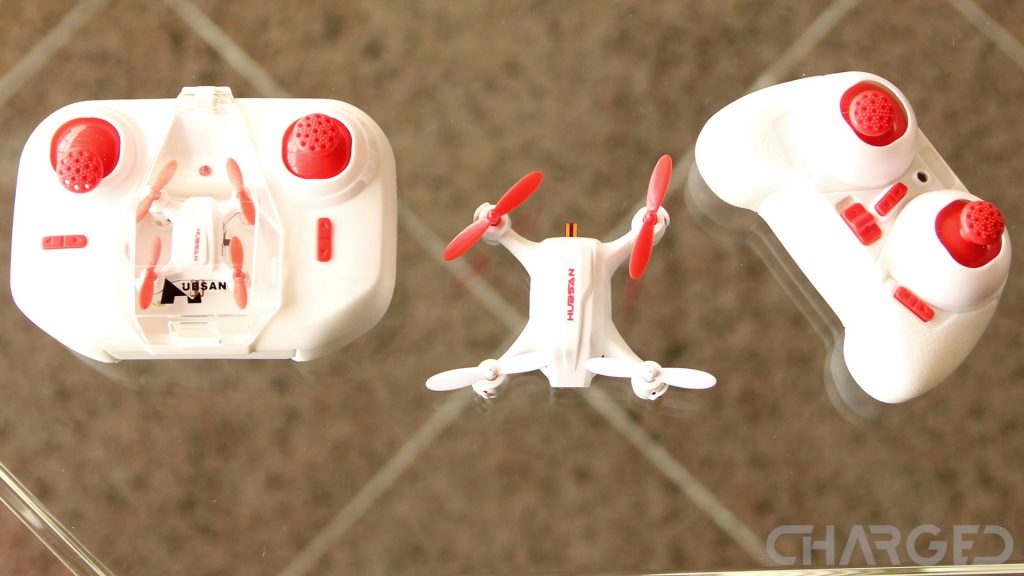
Keeping things small is great for first time fliers and children. Most all toy-class drones are light-weight, which is nice. However, small does not necessarily mean it’s a toy. There are some high-end quadcopters out there that are small and light-weight as well. Not to mention powerful enough to really hurt if you get in the way of the propellers.
Small drones allow for easy portability, and if you go small enough, you get to where you can safely fly indoors. We explored nano drones recently, the smallest of the small, they can barely hurt a fly. Anything larger and heavier than a nano drone will produce enough power to hurt, or punch holes in walls, consider the risks before taking off.
This is not a best list, not exactly, but these are solid drones we’ve flown or recommend for each segment.
Hubsan H111: Tiny nano drone for indoor flight

The Hubsan H111 is a fantastic drone for any pilot. It’s tiny enough to safely fly indoors, it’s easy to fly, but challenging enough to help hone your skills on the sticks. Enjoy about 5 minutes of flight per charge, which is perfect for those mid-afternoon breaks from real life.
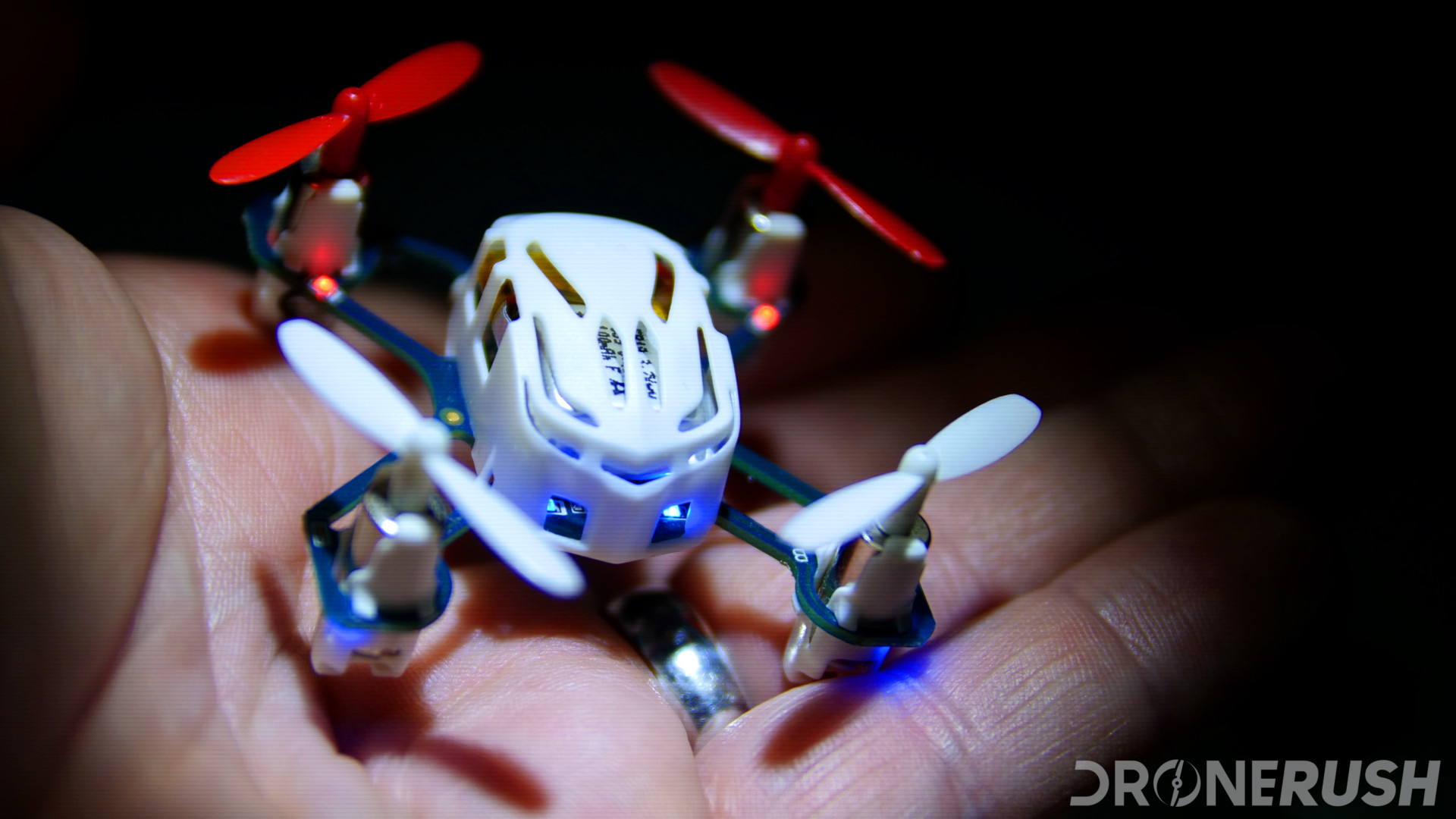
- Fun to fly
- Safe for indoors
- Good trainer
The Hubsan H111 is one of the best nano drones for flying around the house. It is a tiny machine that fits in the palm of the hand, flies slowly and is small enough that it is unlikely to cause harm to you or your house when it crashes. Enjoy a low-risk simple flight experience.
Syma X5C: Resilient toy drone for your first outdoor flight

The Syma X5C is a solid starter drone for those that want an inexpensive machine to learn how to fly. It’s large and powerful enough to fly outdoors in a light breeze, and simple enough to be enjoyable.

- Great beginner's drone
- Easy to fly
- Resilient
An excellent starter drone, the Syma X5C is resilient, reliable and easy to operate. Nothing fancy here, just a simple toy-class drone to practice flying a drone.
DJI Mini 2: A 4K camera in a mini drone

The DJI Mini 2 is one of the most accessible GPS-enabled drones on the market. The 4K camera is as good as your smartphone, and the drone is equipped for great flight time and connectivity range. Best of all, the Mini 2 weighs less than 250 grams, meaning you do not need to register it with the FAA before you fly.

- 4K camera
- Very portable
- Easy to fly
- 249 grams
The DJI Mini 2 is a superb update from the Mavic Mini, now offering a 4K camera, Ocusync 2.0 and more power.
DJI FPV: Hybrid camera-racing drone

The DJI FPV may be the most fun you’ll have at the sticks of a small drone. In one mode, enjoy the FPV as a 4K camera drone, use the hybrid mode to learn how a racing drone differs from a camera drone, or pop it into full manual to experience the full glory of drone racing, including speeds up to 87mph. The optional Motion Controller changes how you fly a drone.
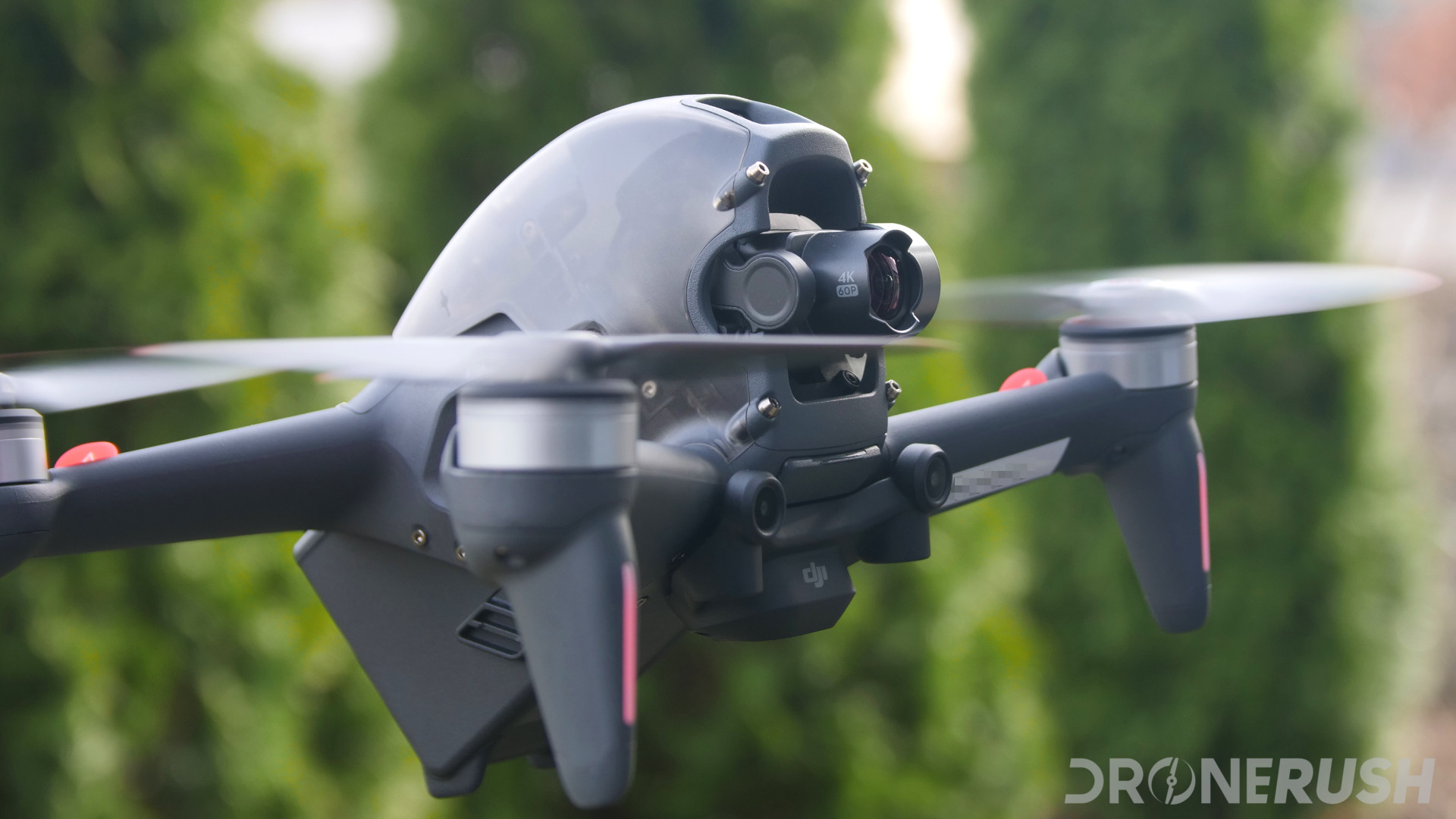
- 4K camera
- Over 85mph!
- Versatile flight modes
- Very fun to fly
- Motion Controller is unique and fun
The DJI FPV is a fantastic hybrid drone. It takes the very best from both the racing drone scene and the camera drone experience, making for one of the most exciting flying machines around. Blending the two has compromises, including shorter flight times than camera drone pilots would like, and agility that may not keep up on a tougher race track.
DJI Mavic 3 Cine: The best consumer drone around

The DJI Mavic 3 maintains DJI’s leadership in the consumer drone market. This powerful camera drone ricks upward of 46 minutes of flight, hauling a Micro Four thirds camera that shoots up to 5.1K video.
In addition to some of the smoothest flight characteristics, and best flight features, the option Mavic 3 Cine offers 1TB internal storage.

- Great camera
- Long battery life
- Long transmission range
The DJI Mavic 3 Cine packs a high-quality Hasselblad-branded camera, almost 50 minutes of flying time, and a transmission range of up to 15 kilometers.
Big drones
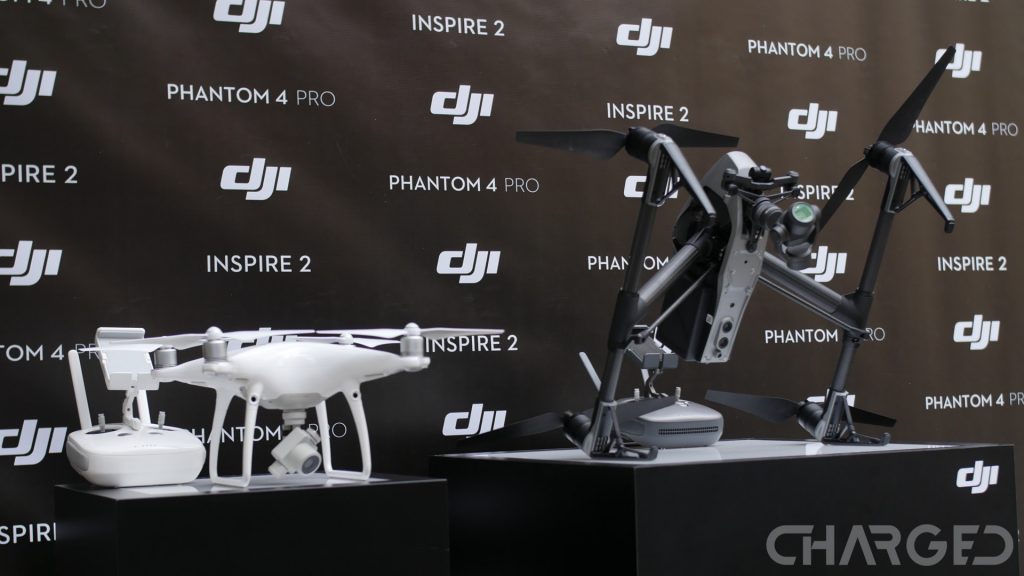
A large size drone adds many logistical difficulties, like not fitting in your backpack, but usually offers a much more stable flight. As mentioned, the smoother you need photo or video capture to be, generally speaking, the larger you’ll want your drone.
DJI Phantom 4 Pro V2.0: Big consumer-drone

The DJI Phantom 4 Pro V2.0 is the best Phantom drone built for consumers. With over a dozen predecessors in the line, DJI put a lot of great things into the Phantom 4 Pro V2.0, including a big 4K camera, Ocusync connectivity, and almost all of the best flight and safety features. This big, powerful drone is fun to fly, but tips the scales in terms of being too large to be convenient. You can attach it to a backpack, but it will not fit inside of the average shoulder bag.
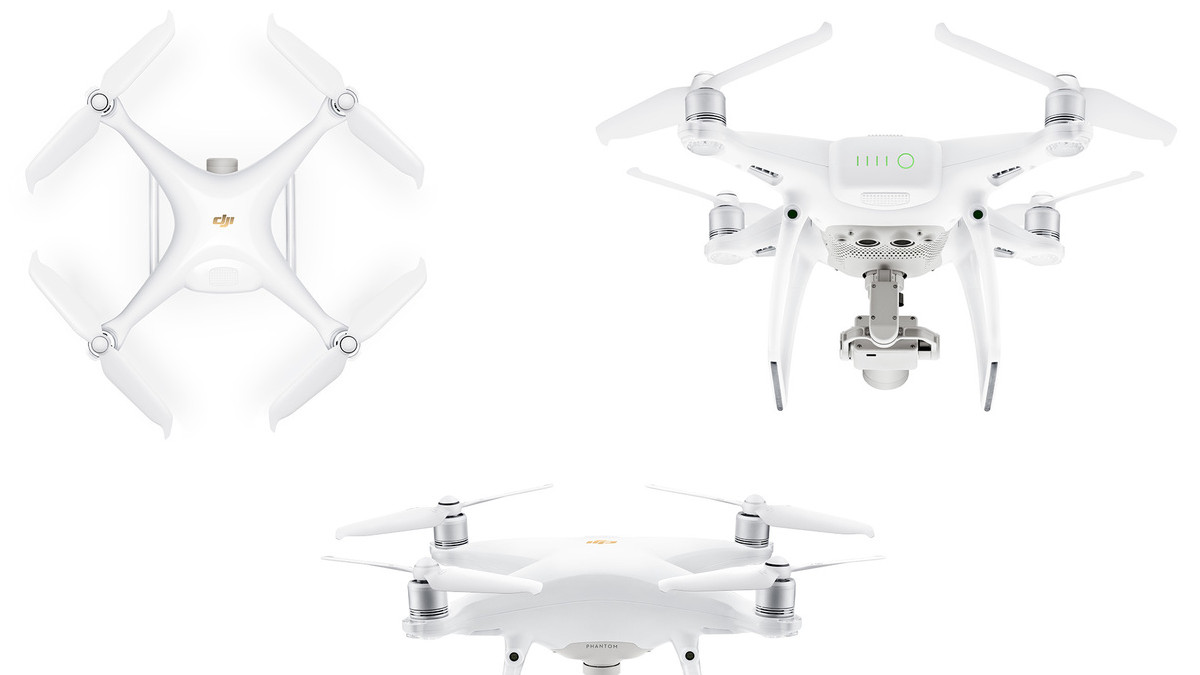
- Large and powerful airframe
- Reliable and safe
Taking the core of the solid <a href="https://dronerush.com/product/dji-phantom-4-pro-and-pro-plus/">DJI Phantom 4 Pro</a>, the Phantom 4 Pro V2.0 adds more efficient motors, OcuSync connectivity and more.
Yuneec Typhoon H3: A big hexacopter with a great camera

The Yuneec Typhoon H3 is the result of several iterations of hexacopter from Yuneec. This drone is made for professional photography from the sky, packing a 4K camera that was co-engineered with Leica. Enjoy the proven reliability of a hexacopter from Yuneec as you haul around this big machine. Even folded down, it will not fit in your backpack, but it’s still small enough you can sling it on your back to take on the go.

- Professional camera drone
- Great Leica camera
Designed with government use in mind, the Yuneec Typhoon H3 is an update to the Typhoon H Plus, packing a powerful Leica camera onto the familiar hexacopter airframe.
Yuneec H520: Big orange hexacopter

Designed for inspection and 3D mapping tasks, the H520 is the kind of drone you’ll find highway patrol using to document and reconstruct accident sites, or utility companies using to inspect powerlines and radio towers.
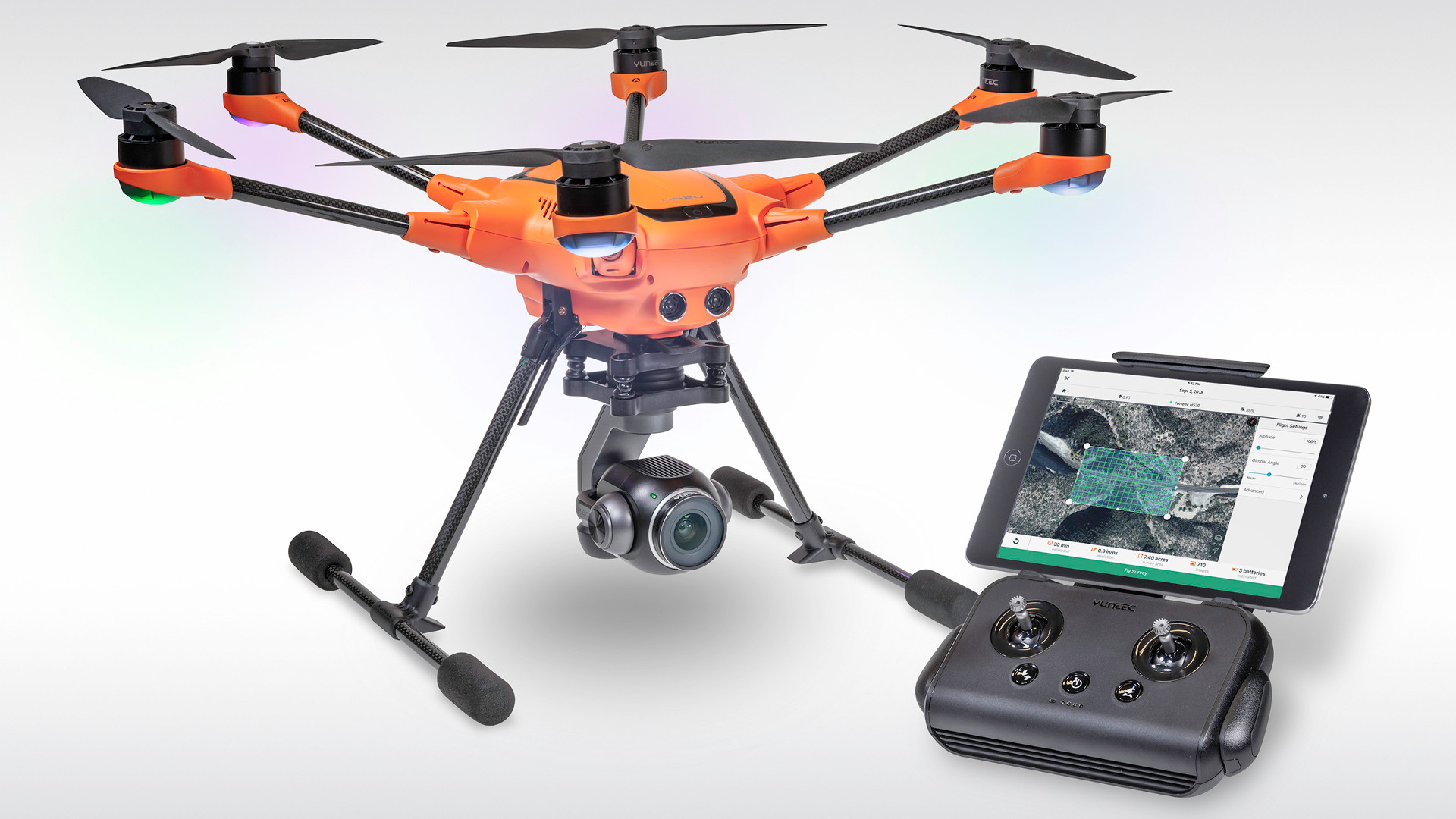
- Stable commercial drone
- High wind resistance
Yuneec's reliable hexacopter hardened for the commercial market, the Yuneec H520 is ready for your inspection tasks and more.
Yuneec Tornado H920 Plus: Put your DSLR into the sky

Yuneec had a goal, put a DSLR into the sky. The Tornado H920 Plus was the result, a powerful hexacopter designed with a big camera in mind. They built their own camera for the task, but you can sling your preferred gear as well.
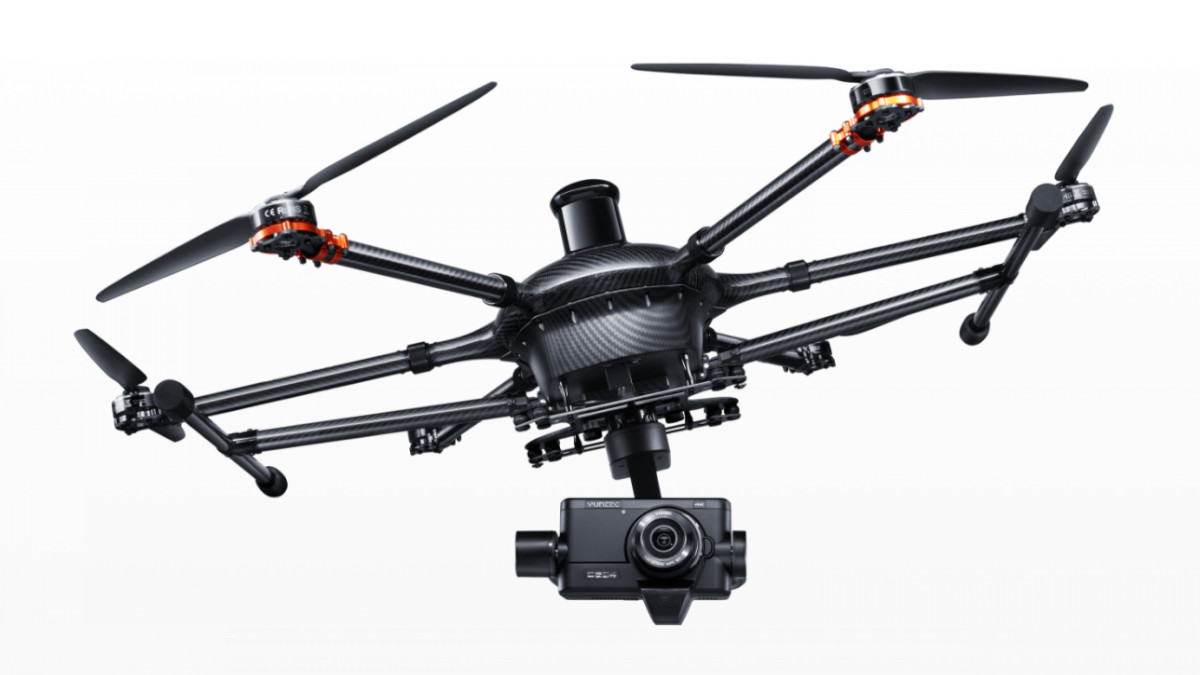
- Powerful airframe
- Carry your DSLR+
The Yuneec H920 Plus is a large, powerful hexacopter, made to haul larger cameras. A reliable machine that masters the basics for your commercial drone needs.
DJI Matrice 300 RTK: Precision mapping and inspections

The DJI Matrice 300 RTK was built for high-precision inspection tasks, with up to three payloads, haul around your infrared camera, zooming camera, normal camera, and even a camera to point upwards if the job calls for it. RTK is the key, meaning you can lock onto GPS coordinates with millimeter accuracy, ensuring extremely accurate results for mapping, or ensuring you get the exact photo every time you fly, so you can easily compare any changes over time.
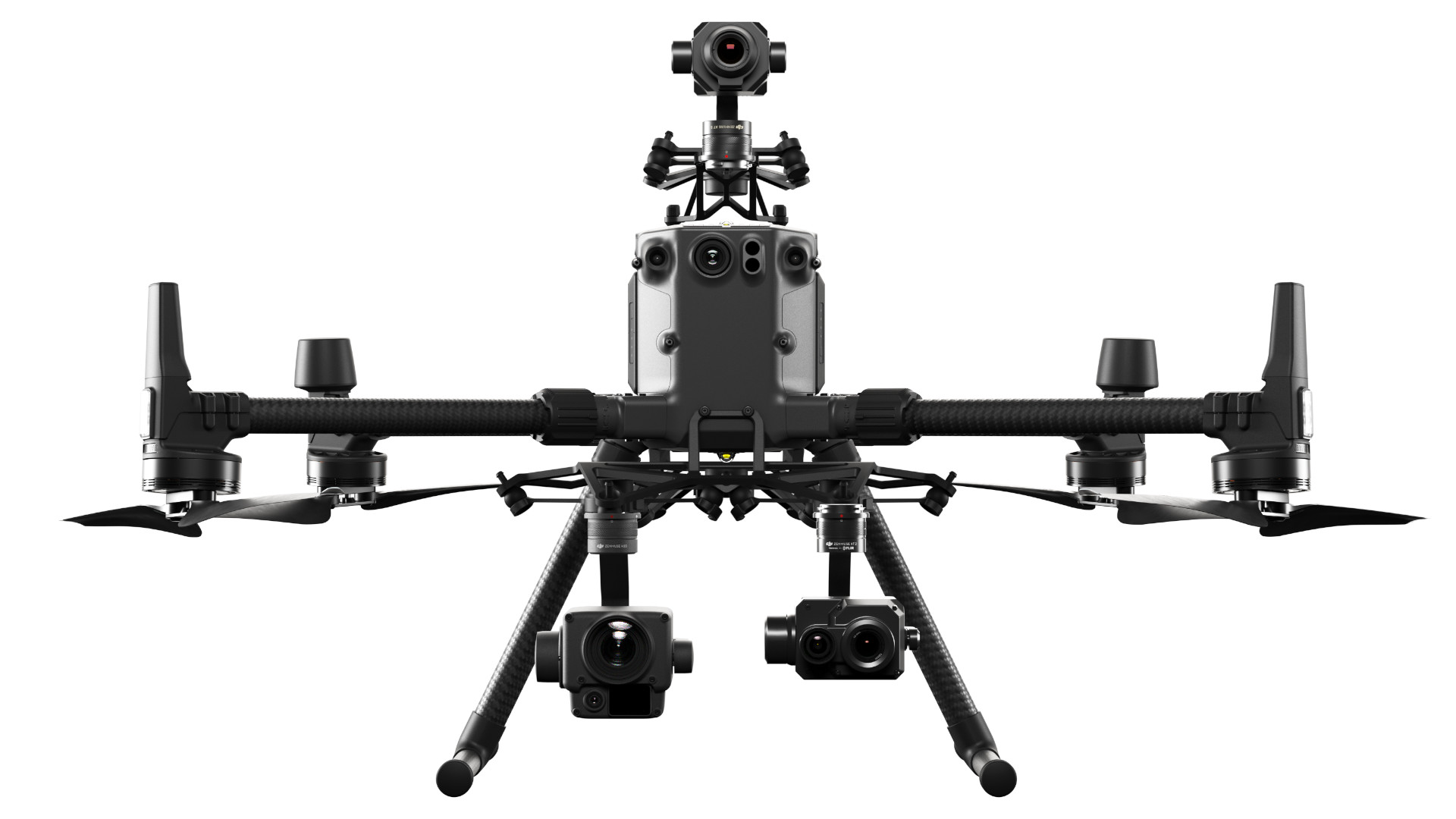
- Versatile commercial platform
- Precise and reliable
The DJI Matrice 300 RTK packs multi-direction obstacle avoidance, advanced airspace awareness and multiple payloads for commercial drone operations.
DJI Inspire 2: Powerful professional camera drone

The DJI Inspire 2 may not be able to haul the large cinema cameras in use across Hollywood studios, but the optional interchangeable payloads available have swappable lenses, and up to 6K video recording. Hot-swappable batteries and multiple I/O ports enable a slew of accessories and recording options.
Bottom line, the Inspire 2 remains one of the best professional camera drones for under $10,000.

- Powerful professional drone
- Interchangeable cameras
Generally recognized as one of the best camera drones on the market, the DJI Inspire 2 offers great cameras, superb flight and robust controls for your filming needs.
DJI Matrice 600 Pro: Whatever camera you want

One of the larger commercial focused retail drones around is the DJI Matrice 600. With six propellers, six batteries, a wingspan of almost six feet and a payload of up to six kilograms… no I’m not making this up, it’s just a big drone. The primary use of this drone is as a way to put your larger camera into the sky, including mounting a full Ronin MX gimbal with Red EPIC camera.
Beam HD video back to a base station and utilize it as a feed for live coverage, or just as a recording for that professional car commercial you are shooting.
At this size and price point, we’d be pretty jealous if you get to buy a Matrice 600 Pro to fly around your backyard for fun. You’re looking at $5,585 for the Matrice 600 Pro to get started, then add on your camera.
Freefly Alta: Hexacopter and Octocopter designs

Freefly makes the Alta drone in two configurations, big and really big. The smaller has six propellers, the larger is eight motors with eight big propellers able to haul a good amount of weight into the air. Freefly also focuses on the professional segment of the drone market, putting powerful cameras into the sky for commercials and big screen productions. If you were wondering, DJI is the sort of company that builds drones, then tailors them for purposes like hanging a camera.
Freefly is a video company, they have handheld and larger camera gimbals and rigs worth drooling over, they learned that there is a new way to utilize a camera: build a drone to fly it.
A 20 lb payload means you can fly pretty well any camera that costs less than the drone itself.
Freefly Alta 6 starts around $11,995 and the Freefly Alta 8 is a $17,500 machine. (Sometimes hard to find on Amazon, try their website and their new Pro line.)
SureFly – passenger drone

We’re giving SureFly center stage here, but you should probably know that Intel, Bell, Airbus and a dozen other players have passenger drones in the works. Some have the goal of on-demand flight, like a taxi service, others are looking to introduce a smaller segment to the air travel that we know now.
We like the idea of ordering one of these passenger drones for our trip to the grocery store – we’re not there yet, but things are on track that we will see it sooner rather than later.
This is it, folks, the ‘flying car’ future that we’ve been dreaming of for the last 50 years of science fiction movies is today. Autonomous flying taxi services, amazing!
How big can drones get?
For the sake of simplicity, I will recommend that there are two main factors in choosing a drone by size. First, ask yourself what you will be carrying, if anything, and how heavy it is. Second, where will you be flying?
To be fair, there are many other reasons to consider size of a drone. Maybe you need it to fit in a bag, maybe battery life is a concern, I think you can answer those questions for yourself as we go. Bottom line, you know if you can fit a huge drone in your tiny car or not.
On the top end of things, please keep in mind the FAA rule for drone weight. You may not fly a drone with total take-off weight of 55 lbs or more, including payload. Too bad, I’d love to try a little drone snowboarding.

Your payload is important, as larger drones are usually more stable for cameras, but small drones fit in backpacks or can fly indoors.
Location is important, you wouldn’t want to crash a large drone indoors and you wouldn’t want to lose a small toy drone over the edge of a cliff on a windy day.
With all that in mind, the FAA does not specify an upper size limit for your aircraft. If you can design a safe craft that weighs under 55lbs, but is 500 feet long, go for it. Also, contact us with the details, we would happily highlight a craft like that on the site.
Finding the right sized drone is likely to be a balance of load carrying capabilities and portability needs for most of us. At least I assume most are looking for a drone with at lease moderate camera capabilities.

The conclusion for the offerings on the market today is that you will need at least a Phantom sized drone, affectionately referred to as mid-sized drone, to do any semi-pro camera work. Smaller drones like the Mavic Pro prove extremely popular, that is mostly thanks to their extreme portability, accepting the lower camera quality as a trade off.
Last, if you have serious camera gear to fly, you’ll need to go big. Motor power can compensate to get a DSLR into the air, but the market only really offers large drones at this time for this need.
How big is yours? Your drone, that is. I fly the Mavic Mini and Air 2S these days, opting for the smaller machines, mostly because they are quieter in my quiet community. That, and the camera on the Air 2S is pretty great.
Frequently Asked Questions
How big of a drone can I fly?
In the United States, and similarly in many other countries, your drone is limited by its weight. All sUAS, as per the FAA’s definitions, must have a take-off weight of less than 55 lbs, including payload. We talk about passenger drones around here, but they are, generally speaking, going to be managed under the same regulations as a passenger helicopter. That’s not strictly accurate, but as they will have people on-board, and weigh more than 55 lbs, they will not be “drones” in the sense that we refer to them around here.
As the FAA does not strictly restrict size, your drone can get fairly large. Unmanned, remotely operated blimps are not a new thing, but are examples of “drones” that get to be 30 feet long, but still qualify for sUAS rules, as they have a low weight.
Are there exemptions to the FAA’s drone laws?
No. While you do not need to register hobby drones that weigh less than 0.55 lbs, once they are in the sky, they are part of the national air system and are under the jurisdiction of the FAA. You may get to skip registration for your toy drone, but it is still an aircraft, you must follow the rules of the sky.
What size of drone requires Remote ID?
When Remote ID goes into effect in 2021, basically all drones will require a location transmitter. Exceptions can exist for some craft under 0.55 lbs, there will be locations that you can fly without Remote ID, and there will be some circumstances that exclude any specific machine on a case-by-case basis, but please expect to upgrade or replace every drone you plan to fly outdoors in the United States after October 2023.
By signing up, you agree to our Privacy Policy and European users agree to the data transfer policy.